Animation &Commentary &UPA 06 Jun 2007 07:55 am
Unicorns In The Garden
If you think back to how children’s books were adapted in animation prior to the 1950′s, you might think of Ferdinand the Bull by Munro Leaf with illustrations by Robert Lawson. Disney’s oscar winning short followed the story closely but ignored the book’s sensitive illustrations. Disney’s short went so far as to caricature Disney and a number of his animators in the cartoon style of the film.
Or you might think of E.H. Shepard‘s delicate watercolors for Kenneth Grahame‘s book, The Wind In The Willows. This delicacy was completely lost when the Disney artists revised the characters, in a somewhat brash cartoon way, for their film. The same was true of Disney’s adaptation of Shepard’s Reluctant Dragon. Shepard didn’t fare well even into the ’60s when Disney artists adapted his Winnie the Pooh to animation.

There are many other variations on this theme wherein animators completely rework beautiful illustrations of children’s book illustrators and rework stories of the book authors. (For one of the vilest variations look at William Steig’s stunning book, Shrek and compare.)
In 1952, UPA successfully and faithfull adapted Ludwig Bemelman’s book and style of painting to animation. Their film Madeline was a very successful short which was nominated for the Oscar. Almost a year later, UPA decided to adapt James Thurber’s whimsical story, The Unicorn In The Garden, to animation.
Thurber was a New Yorker cartoonist and doodler cum cartoonist. He was enormously successful at his trade, and the book which included “Unicorn In The Garden” was The Thurber Carnival. We know that UPA was considering the entire book of short stories as an animated feature and were calling it Men, Women and Dogs. The feature was scripted. For whatever reason (I’m sure someone out there knows, and I assume it has something to do with Joseph McCarthy), the feature was abandoned, and the short was completed.
They remained absolutely faithful to Thurber’s story and drawing style even though the very short story had only one drawing (and not one of Thurber’s best.) I’ve placed both the story and animated film at the end of this post if you want to compare.
Off the top of my head, I can only think of two other occasions that Thurber’s style was adapted to animation. Both the Jack Lemmon vehicle, The War Between Men and Women, and the tv show, My World and Welcome To It, which starred William Windom, adapted Thurber to animation as an aside to the “cartoonists” featured in the live action. Both were produced by Melville Shavelson and had similar setups – daydreaming cartoonist bumbles through his life with his alter ego being represented by the animation.
The original UPA short, to me, is beautifully animated, designed (around Thurber’s B&W drawing style hence the limited and delicate colors of the film), and sensitive to the original intentions of the author/illustrator. The film story is told with an absolute minimum of dialogue, the animation virtually carries the tale.
I remember seeing this for the first time when I was young and enjoying the seemingly innocent (or is he?) husband as he tries to share his discovery of the Unicorn in their garden with his cynical and sarcastic wife. This wasn’t something I’d seen in animated cartoons before. It wasn’t for children; it was for adults, and I felt like an adult watching it. The film offered a sophistication that Deputy Dawg didn’t. My feelings haven’t changed for the film. I love the psychiatrist who virtually sits his way through the film. Yes, I still absolutely enjoy this film.
The short also set the stage for children’s book adaptations in the future. This is a type work I’ve done often, and I like to think that I’m carrying on the tradition of this film as well as the original Madeline. It’s also something I enjoy doing. I honestly think there’s something that enlarges your own abilities when you can master another’s style and incorporate your own personality into it.
But, of course, that’s all my own opinion.
Here‘s the original story by James Thurber:
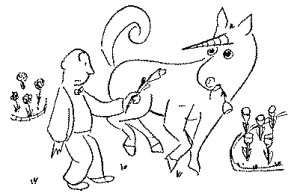 Once upon a sunny morning a man who sat in a breakfast nook looked up from his scrambled eggs to see a white unicorn with a golden horn quietly cropping the roses in the garden. The man went up to the bedroom where his wife was still asleep and woke her. “There’s a unicorn in the garden,” he said. “Eating roses.” She opened one unfriendly eye and looked at him.
Once upon a sunny morning a man who sat in a breakfast nook looked up from his scrambled eggs to see a white unicorn with a golden horn quietly cropping the roses in the garden. The man went up to the bedroom where his wife was still asleep and woke her. “There’s a unicorn in the garden,” he said. “Eating roses.” She opened one unfriendly eye and looked at him.
The original Thurber illustration .
“The unicorn is a mythical beast,” she said, and
turned her back on him. The man walked slowly downstairs and out into the garden. The unicorn was still there; now he was browsing among the tulips. “Here, unicorn,” said the man, and he pulled up a lily and gave it to him. The unicorn ate it gravely. With a high heart, because there was a unicorn in his garden, the man went upstairs and roused his wife again. “The unicorn,” he said,”ate a lily.” His wife sat up in bed and looked at him coldly. “You are a booby,” she said, “and I am going to have you put in the booby-hatch.”
The man, who had never liked the words “booby” and “booby-hatch,” and who liked them even less on a shining morning when there was a unicorn in the garden, thought for a moment. “We’ll see about that,” he said. He walked over to the door. “He has a golden horn in the middle of his forehead,” he told her. Then he went back to the garden to watch the unicorn; but the unicorn had gone away. The man sat down among the roses and went to sleep.
As soon as the husband had gone out of the house, the wife got up and dressed as fast as she could. She was very excited and there was a gloat in her eye. She telephoned the police and she telephoned a psychiatrist; she told them to hurry to her house and bring a strait-jacket. When the police and the psychiatrist arrived they sat down in chairs and looked at her, with great interest.
“My husband,” she said, “saw a unicorn this morning.” The police looked at the psychiatrist and the psychiatrist looked at the police. “He told me it ate a lilly,” she said. The psychiatrist looked at the police and the police looked at the psychiatrist. “He told me it had a golden horn in the middle of its forehead,” she said. At a solemn signal from the psychiatrist, the police leaped from their chairs and seized the wife. They had a hard time subduing her, for she put up a terrific struggle, but they finally subdued her. Just as they got her into the strait-jacket, the husband came back into the house.
“Did you tell your wife you saw a unicorn?” asked the police. “Of course not,” said the husband. “The unicorn is a mythical beast.” “That’s all I wanted to know,” said the psychiatrist. “Take her away. I’m sorry, sir, but your wife is as crazy as a jaybird.”
So they took her away, cursing and screaming, and shut her up in an institution. The husband lived happily ever after.
Moral: Don’t count your boobies until they are hatched.
__________________Now check out the film below if you haven’t seen it recently.
Directed by Bill Hurtz
Story by James Thurber
Animation by Phil Monroe, Rudy Larriva, Tom McDonald
Design & Color by Robert Dranko
Music by David Raksin
Production Manager Herb Klynn
Produced by Stephen Bosustow
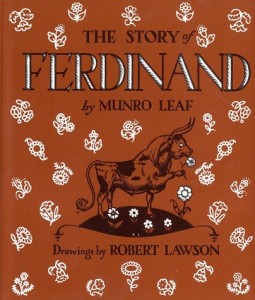
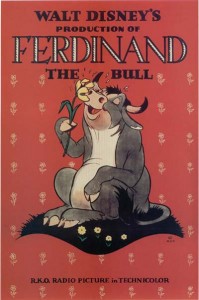
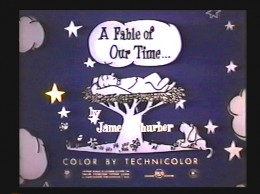
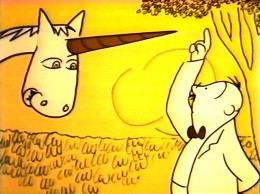
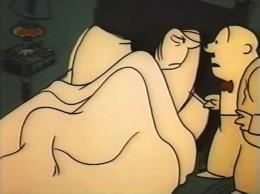
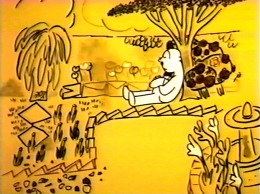
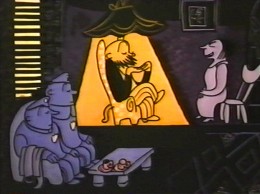
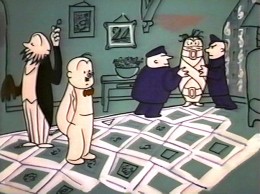

on 06 Jun 2007 at 10:58 am 1.Mig said …
UPA´s adaptation of Unicorn in the Garden is a beautiful cartoon, with or without John K. rants. I just reviewed it , casually.
My favorites UPA shorts, though, come mostly from Cannon. I like Mom and Dad the same (UPA and Warner/Disney , BTW. But cant stand watching Lantz and Terrytoons stuff (except for a few shorts)
Michael, you ought to see some cartoons from russian animator Mikhail Aldashin, from Pilot Studios. Enlightening sample of how animators are not always obliged to decide between style and funny cartoons. And no, I´m not russian too.
on 06 Jun 2007 at 12:32 pm 2.Michael said …
Thanks, I’ve seen Mikhail Aldashin’s films The Other Side and Kele. Both are on YouTube. He’s talented mixing media. Both of these were done with cel/sand/cut out and camera. I wonder what his current work (undoubtedly with computer) looks like.
I’m a bigger fan of Sonya Kravtsova’s work. She is obviously influenced by Yuri Norstein, and adds her own personality to the mix. The Music Store is a great film. Her most recent film About a Bold-Headed Princess will be in Annecy this year.
on 06 Jun 2007 at 12:56 pm 3.Mig said …
The Other Side and Kele were very early works (in fact Kele was his student project) I have discovered his work in ANIMAC 07 (Animac is a spanish Animation Festival)
Jeez, he is quite an eclectic but rich animator and he can carry out a commissioned series for Cartoon Network or a lyrical personal short, standing on the bridge between gag-driven slapstick as in “Bookashkis” (Bugs, 2005) and artistry based like “Nativity”, 1997 or “About Ivan the Fool” (2005)
Sorry for the off topic , it was the John K. issue that made me think about it (in fact it was an email from one my students a-la-K. what warned me about certain sectarism round, you know what I mean .
Oh, thanks for your wonderful blog.
on 06 Jun 2007 at 1:04 pm 4.Mig said …
Forgot to say that my two year old daughter solved all these polemics about style or not. She loves UPA´s Ballet-Oop, and Gerald McBoing Boing and Tom & Jerry. Also many Looney Tunes (every Inki, for example), Disney’s Winnie the Pooh and Khitruk’s Vinni Puk, too; Totoro and Pocoyó… all the same. ,
,
Heh, just like dad’s tastes, except for the worst, Woody Woodpecker
on 06 Jun 2007 at 4:19 pm 5.Pete Emslie said …
I’d have to disagree with you on this one, Michael. I believe that Disney’s visual adaptations of those tales was quite justified and probably even necessary. It seems obvious to me that Walt was most interested in putting his own personal stylistic stamp on his adaptations, using the original stories and illustrations as little more than stepping stones to creating something uniquely his own, critics be damned. In fairness, I think that the original three Disney featurettes of the Pooh stories retained a lot of the charm and humour of the Milne books, including much of the quirky dialogue used verbatim, even though the character designs were Disney-fied to a fair degree. In contrast, “The Jungle Book” used only a very few essentials from the Kipling story as a point of departure for what became a unique and entertaining Disney version of the tale. I would say both projects are very successful when accepted on their own terms.
I just returned from seeing the Disney exhibit in Montreal last week and was struck by how closely they had originally planned to follow “Alice in Wonderland”, based on the way David Hall had tried to retain a healthy influence from Tenniel in his concept paintings. To be sure, the final film has very little stylistic relation to those early concepts and seems to break from Tenniel completely, opting instead to follow the design style of resident Disney designer, Mary Blair. Again, I think this may have ultimately been a better approach, resulting in a film that was pure Disney. For those that criticize this approach, I would suggest that Disney was no more guilty than MGM had been in their adaptation of “The Wizard of Oz”. That film is just as much a unique creation of Hollywood as anything Walt adapted.
on 06 Jun 2007 at 4:45 pm 6.Michael said …
I don’t dislike what Disney did with Ferdinand or The Reluctant Dragon, but I’m not as fond of their Pooh as I am Shepard’s, but accept it in the first film or two that they did.
I certainly do not like The Jungle Book; I think Disney lost the greatness in Kipling’s story. I also don’t think they came close to what they should have with Alice. Both films are, to me, boring – despite some beautiful animation. I have seen the David Hall watercolors and would have preferred them to the Mary Blair style. They’re both a little too show-busy without enough respect for the books they’re adapting.
I’m not looking for Disney to match an illustrator’s style; I’m just pointing out that Madeline and Unicorn In The Garden broke ground in adapting these books so faithfully.
on 08 Jun 2007 at 1:35 am 7.oscar grillo said …
You can’t imagine how much I sympathise and share your thoughts. Bravo, Michael!
on 14 Apr 2011 at 3:56 pm 8.Greg said …
What is the difference between the story and the film??
on 03 Jun 2020 at 6:58 pm 9.Donnetta Tomasi said …
I simply want to say I’m very new to blogs and definitely savored you’re page. More than likely I’m going to bookmark your blog . You certainly come with impressive writings. Appreciate it for sharing with us your website.